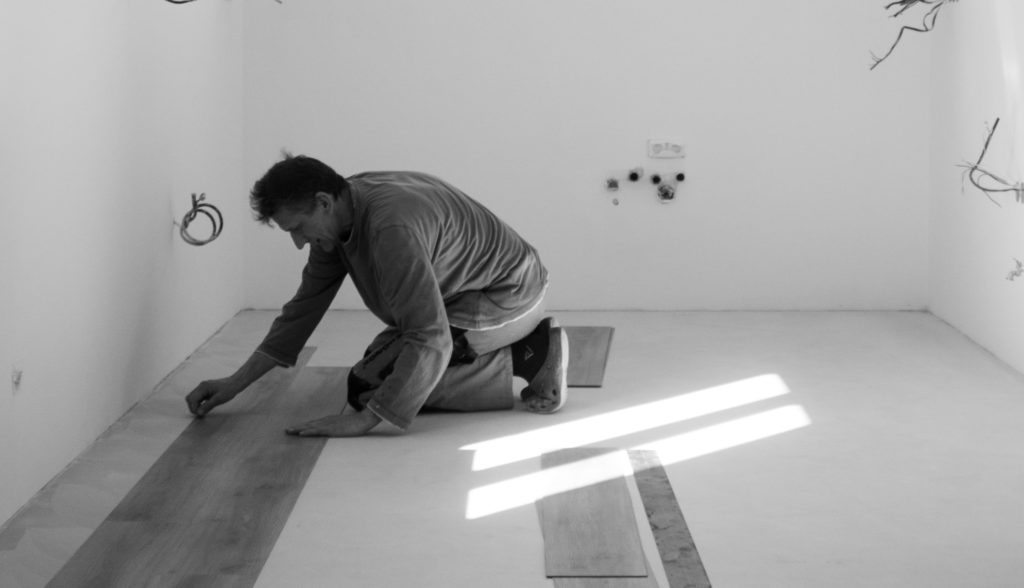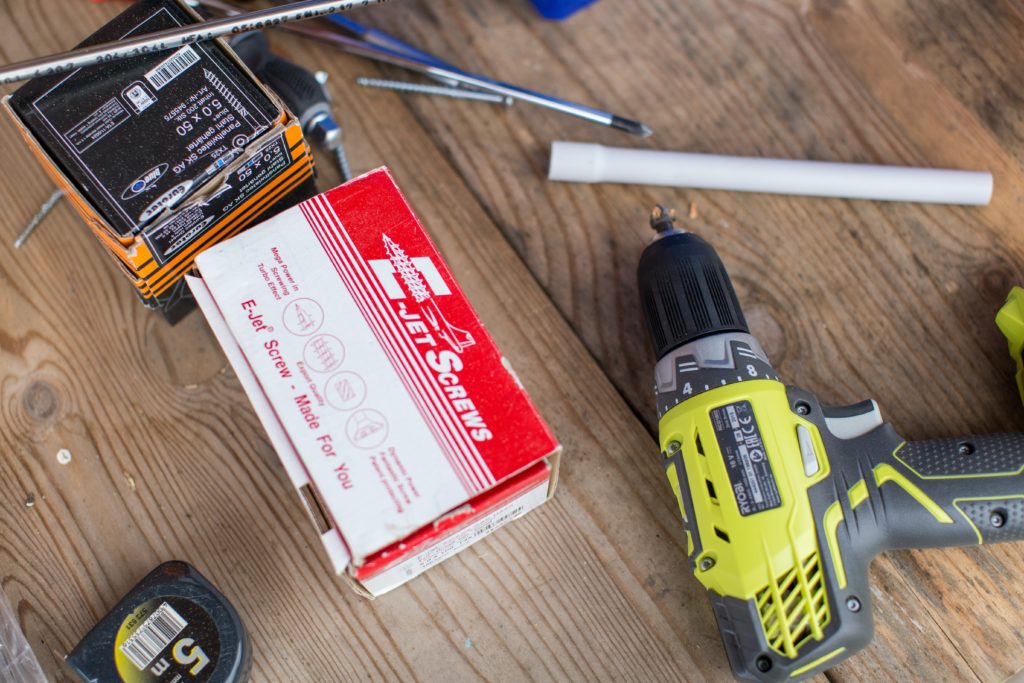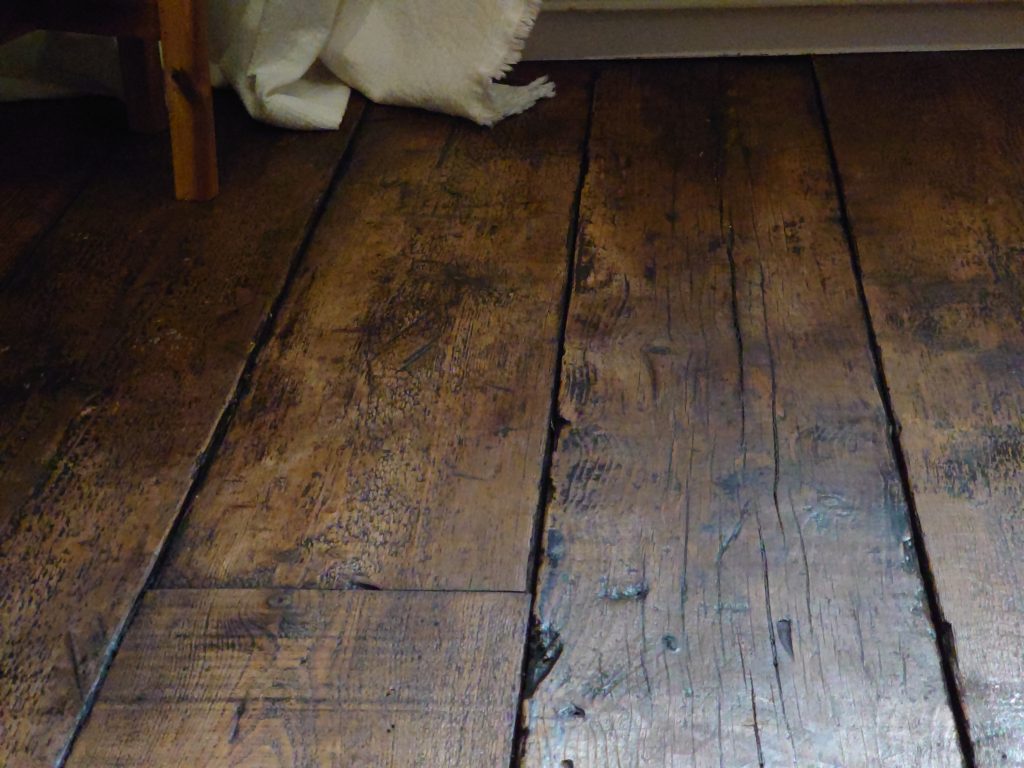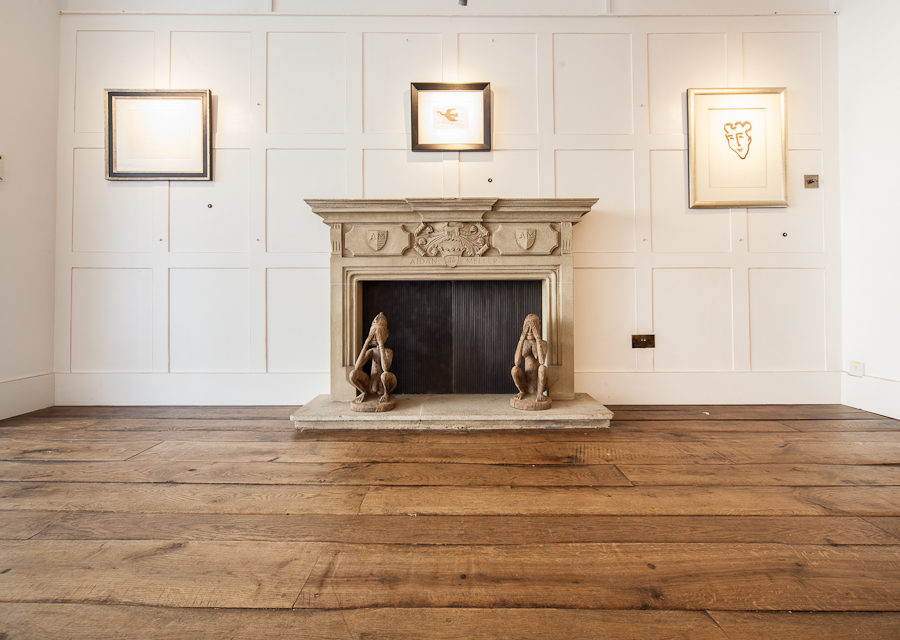When it comes to wood flooring, there is a choice between solid wood flooring, engineered wood flooring and laminate flooring, each with their own advantages and disadvantages. To help you make the best choice for your requirements, we explain each type and how they are used.
What is Laminate Flooring?
Firstly, laminate flooring is not actually made out of real wood. It is a synthetic product made to give the appearance of a wood floor. The base is made of thin resin and fibre board with a photographic layer on top that imitates the colour and texture of wood.

Why is Laminate Flooring good?
Laminate flooring is cheap per square metre. It is easily available at big-brand DIY stores and is designed to be easily cut and fit by the home DIY enthusiast. The thin boards can be cut with DIY tools and the tongue-and-groove fitting means it is easy to slot together. It is lightweight, therefore it is easy to handle and suitable for installation in small rooms, temporary structures, park homes and shed-offices. A wide range of wood colours and effects can be simulated, allowing you to have the appearance of an expensive, exotic or otherwise unavailable wood at low cost.
Why is Laminate Flooring a bad choice?
Laminate flooring lacks the natural variation in colour and texture that real wood has. Therefore, when laid over a large area, the uniform image of the flooring can look “fake”.
Because the boards themselves are thin and the image of the wood is only a wafer thin layer over the top, the flooring is easily ruined by dents and scratches. Entire panels may need to be replaced, whereas a solid wood floor can be sanded back and re-finished.
If there is water damage or humidity in the air, then panels can easily warp and separate. Poor fitting or a low cost product can have an uneven appearance with joins in the panels either bowing upwards or separating to leave gaps.
In some countries, the manufacturing of laminate flooring is done with certain chemicals that may release into the atmosphere once laid.
What is Engineered Wood Flooring?
Engineered wood comprises a thin layer of real wood adhered to a base layer of cheaper composite (like MDF).

Why is Engineered Wood a good choice for flooring?
Engineered wood flooring is mass-produced and easily available from big-brand DIY stores. It is designed to be easily cut and fit by a home DIY enthusiast, floor fitter or handyman (usually with tongue-and-groove or specialist click-fit features). Because it uses a layer of real wood, it retains the natural knot textures and variation of solid wood flooring and some products can be sanded back and re-finished if they become damaged. Engineered wood flooring comes in a variety of colours and finishes.
What are the disadvantages of Engineered Wood Flooring?
Because it is made to easily fit any room, engineered boards can ultimately still appear too uniform or “manufactured”. The joins between panels are so neatly cut that they lack the true natural variation in shape that solid wood has.
Customers are restricted to the colour choices available in the shops, which may not accurately match the requirements of their project.
Engineered wood still utilises the chemical composition in the base layer which may be an issue for customers concerned about air quality.
Whilst engineered wood flooring used to be a cheaper compromise for customers who wanted “real wood” without the cost, it is now becoming comparable in price to solid wood, therefore it is no longer an economical sacrifice on quality.
What is Solid Wood (or Real Wood) Flooring?
Solid wood flooring comprises thick-cut pieces of timber making up whole flooring panels or blocks. There is no sub-standard material used to “pad out” the floor board. Flooring can be cut into long “traditional” floor boards or short blocks that can be arranged in a herringbone, parquet or Versailles panel formation.

Why is solid wood flooring so good?
Solid wood flooring showcases wood in its most natural, authentic form. Over a large area, a solid wood floor can make an outstanding impression. Flooring is expertly crafted in a workshop and can be shaped to your specifications. It can be cut smoothly and uniformly or it can be cut and shaped to enhance an antique look. It is perfect for restoration work in historical buildings and for reflecting the heritage of an inherited property.
Flooring can be prepared and treated to ensure durability in the environment, for example in high-traffic areas and to accommodate underfloor heating without warping the panels. Specialist formations such as parquetry can be laid to give variation and character away from the traditional straight floorboards.
The thickness of a solid wood floor allows more frequent sanding back and re-finishing for high traffic areas such as school halls or for lasting quality in a heritage property.
Flooring can be treated to produce an exact colour match for your project requirements. There is little difference now in the cost per square metre of solid wood and engineered wood, so it is a perfect opportunity to acquire a high-end product without compromising on quality.
See more examples of our flooring projects on our Instagram account
What are the disadvantages of solid wood flooring?
Because it is a bespoke product, solid wood flooring takes time to manufacture. You cannot pop down to your local DIY store and pick up solid wood flooring, it must be cut, dried and treated to order. Solid wood flooring usually requires a specialist fitter as it is not designed to simply “click together” by the customer. Solid wood flooring is heavier than laminate or engineered wood, therefore it may not be suitable for spaces that do not have a strong base (such as park homes or temporary spaces).
Contact Heritage Reclamation to discuss your flooring requirements:
At Heritage Reclamation, we specialise in solid wood flooring from new or reclaimed oak and pine (and sometimes other, exotic woods). We can advise on the right type of wood and finish for your project and arrange for you to come in and experience our colour choices and textures (or we can send you some samples). Find our contact details here.
